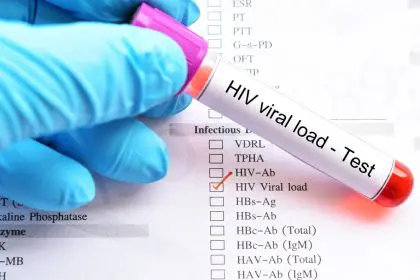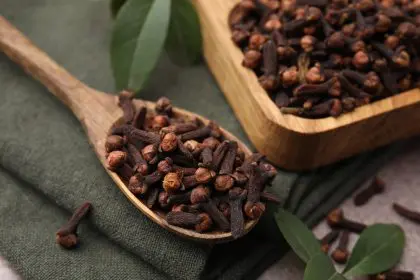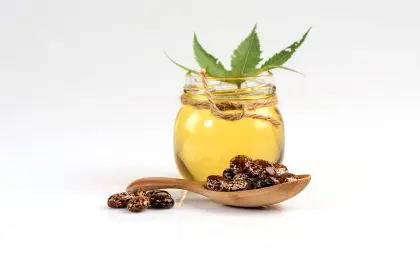Dermatologists explain that fever blisters result from the herpes simplex virus type 1 (HSV-1), which affects over 3.7 billion people worldwide. Dr. Michael Harris, leading dermatologist at Metropolitan Skin Institute, explains that while the virus remains dormant most of the time, certain triggers can awaken it.
The science behind natural healing
Recent research from the Journal of Dermatological Science reveals that specific natural compounds effectively fight the herpes virus. These discoveries validate traditional remedies while identifying new natural solutions for managing outbreaks.
Nature’s most powerful defenders
Medical research confirms several natural substances show significant antiviral properties against HSV-1. Honey, particularly Manuka honey, demonstrates remarkable healing abilities due to its unique antibacterial and antiviral compounds. Studies show it reduces healing time by up to 35% compared to conventional treatments.
Understanding your body’s response
The immune system plays a crucial role in managing fever blister outbreaks. Dr. Sarah Thompson, immunologist at Central Medical Center, explains that supporting immune function through natural means helps prevent and manage outbreaks more effectively.
The stress connection
Research indicates that stress significantly impacts fever blister occurrence. Cortisol, the stress hormone, can suppress immune function and trigger outbreaks. Understanding this connection helps develop more effective prevention strategies.
Environmental factors matter
Dermatologists emphasize that environmental conditions influence outbreak frequency and severity. UV exposure particularly affects viral activation, making sun protection crucial for prevention.
Dietary impact on healing
Recent studies reveal strong connections between diet and fever blister management. Specific nutrients support immune function and help prevent outbreaks, while others may trigger them.
The power of prevention
Medical experts emphasize that preventing outbreaks proves more effective than treating them. Understanding personal triggers and maintaining proper immune support helps reduce outbreak frequency.
Building natural resistance
Long-term management involves strengthening the body’s natural defenses. This approach combines dietary support, stress management, and targeted natural remedies for optimal results.
The role of sleep and recovery
Research demonstrates that adequate sleep significantly impacts immune function and healing time. Poor sleep patterns increase susceptibility to outbreaks and slow recovery.
Timing matters in treatment
Early intervention with natural remedies shows better results than waiting until blisters fully develop. Recognizing early warning signs allows for more effective treatment.
Emergency intervention strategies
When unexpected outbreaks occur, immediate response proves crucial. Medical experts recommend starting with cold therapy at the first sign of tingling or discomfort. Following the initial response, applying appropriate topical treatments while supporting immune function through proper rest and increased hydration helps minimize outbreak severity. Many patients find that combining multiple approaches provides the most effective relief during unexpected episodes.
Natural approaches to prevention
Research continues supporting the effectiveness of multiple natural strategies in preventing outbreaks. Leading dermatologists recommend consistent daily routines that incorporate immune support, proper nutrition, and stress management techniques. Dr. Sarah Chen explains that prevention requires a holistic approach rather than focusing on single solutions.
The role of seasonal changes
Seasonal variations significantly impact outbreak patterns. Winter months often bring increased stress and reduced vitamin D levels, while summer presents heightened UV exposure risks. Understanding these seasonal influences helps develop more effective year-round prevention strategies.
Age-related considerations
Treatment effectiveness often varies with age, requiring adjusted approaches throughout different life stages. Younger individuals typically respond well to immune-supporting protocols, while older adults may need additional focus on skin barrier protection and healing support.
Emerging research developments
Recent studies reveal promising developments in natural fever blister management. Researchers at the International Dermatology Institute have identified new plant compounds showing significant antiviral properties. These discoveries may lead to more effective natural treatment options in the coming years.
Long-term management strategies
Successful long-term management requires understanding personal patterns and triggers. Dr. Michael Foster emphasizes that maintaining consistent preventive measures while remaining prepared for occasional outbreaks provides the most reliable approach to managing fever blisters naturally.
The impact of modern lifestyles
Contemporary living presents unique challenges in managing fever blisters. Increased stress levels, environmental pollutants, and changing dietary patterns all influence outbreak frequency and severity. Adapting prevention strategies to address these modern factors improves management success.
Building resilience naturally
Supporting overall health creates stronger resistance to outbreaks. Regular exercise promotes better immune function while proper nutrition provides necessary healing nutrients. Adequate sleep allows the body to maintain stronger natural defenses against viral activation.
Understanding healing patterns
Individual healing responses vary significantly, influenced by multiple factors including overall health, stress levels, and immune function. Recognizing personal healing patterns helps develop more effective treatment approaches tailored to individual needs.
The future of natural treatment
Ongoing research continues revealing new natural approaches to fever blister management. Scientific validation of traditional remedies combined with discovery of new plant-based compounds promises improved treatment options. These developments may provide more effective natural solutions for managing outbreaks.
Creating sustainable routines
Establishing consistent daily practices supports long-term management success. Morning immune support combined with proper daily sun protection and evening stress reduction creates a foundation for better outbreak prevention. These routines become more effective as they become habitual.
Supporting overall wellness
Maintaining general health significantly impacts fever blister management. Proper hydration supports healing processes while balanced nutrition provides necessary nutrients for immune function. Regular exercise promotes better stress management and overall health maintenance.












